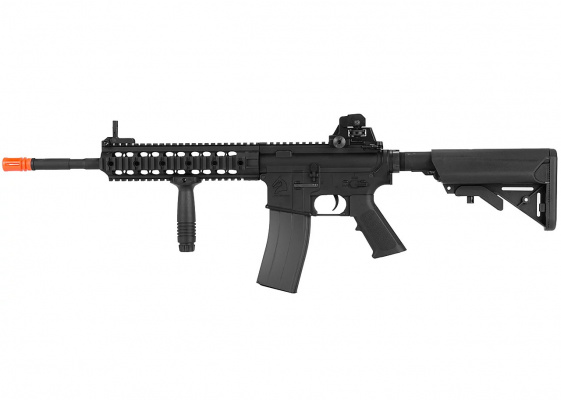Firearms are one of the most important markets in many places in the world. While access to guns is restricted in many countries, a lot them have legislation that allows private citizens to own a gun to protect themselves. The demand for better guns is there, with each year increasing as more lawmakers look to limit access to them. The result is that many markets don’t get what they want because a lot of manufacturers don’t have the right material to create a better product. There is also the growing perception that many of these established players are using plastic parts to assemble their guns, and this affects their performance quality.
It’s our mission to use these lines to clear up this wrong perception. Plastic injection molding parts are already used as facsimiles for metal parts in many industries, some of these new parts have to withstand rougher conditions than most handguns, and they are still working just fine. The problem from where we stand comes from a lack of imagination to change preconceived notions about the functionality of a handgun. In other words, the firearm industry has become stagnant, complacent, and it’s low on ideas to upgrade their existing models using new materials that could very well make them safer, accurate, reliable and overall effective.
Think about it for a moment. Almost every industry that has embraced plastic as their material of choice to create parts is currently booming with business, and they keep plastic manufacturers working around the clock to deliver what they need. Why would it be any different with the gun industry? If you search online, you can catch sight on the future as quite a few enthusiasts have taken it up to themselves to create functional plastic guns using 3D printing technology that relies on resins. And they all have the conditions we just mentioned in a single package: they are accurate, safe, reliable, and effective. If you want to know how plastic injection molding can make firearms even better take a look at the following lines.

plastic injection molding guns, *picture from airsoftgi.com
The Long-term Benefit of Plastic Firearms
Regardless of the setting or occasion, when we choose to use a gun, there is one thing that must be certain once we place it in our hands: a firearm has to be efficient, dependable, and safe to use. Handling a gun calls for many variables that affect their maneuverability, it needs to feel balanced, and our grip on it should feel intuitive as we grasp it, the sight across the barrel should help us point with accuracy, and we should be able to keep it functional after a repeated fire.
This is not a norm for casual users; we are talking about the standards that any professional would require on a service firearm. Military men, teams working law enforcement, and security, need weapons that work safely while they carry them. These pieces of equipment should be ready to use in a moment’s notice. A good firearm needs to work in every possible condition regarding the number of rounds it can shoot to the quickness at which it can be reloaded.
While full conversion to plastic is nearly impossible, engineering and initiatives have shown us that the human mind can crack even the most challenging situations with a little imagination. A lot of guns use plastic parts successfully, and they have improved their functionality to a tenfold. Even bullets made that transition a long time ago to avoid unnecessary kills when it comes to riot control equipment used by police officers. Fiction has established that polymers are the way of the future to prevent the disruption created by magnetism in regular guns. It’s safe to say that at some point we will get a full firearm made of plastic for a reasonable price.
Innovative Injection Molding to Meet Gun Safety Standards
As we mentioned before a regular firearm entirely built in plastic resins can’t meet current safety standards at once. A gun created in this fashion produces a lot of scraps, and it changes the firing properties of the original model drastically because of the heat generated. It would also demand constant maintenance, and they crack and brittle because of the continuous changes in temperature they have to endure.
Some plastic firearms also bind their slide, because they hamper the rate of fire of a semi-automatic firearm. While this feature still needs to be worked over, there are other positives uses for plastic injection molding that is currently used on modern firearms such as the grips. A lot of companies are using fully-automated plastic injection molding to create grips that work even better than the previously crafted ones, with even properties on all models that don’t change from a single piece to another. Their grip is better, their functionality unquestionable.
The Art of Working with Material to Make Firearms
To created modern firearms, manufacturers need thermoplastics, elastomers, colorants, and additives. All of these materials are tested and blended to perfection, so the result is fully functional components working in harmony. Most of what we have discussed in these lines are addressed in some form after choosing materials to work with. All of them add up to create very high-quality guns. There are no hardships to integrate plastic on firearms, there is more of a transition process where plastic is the material of choice to test and change on the build of new guns that are more reliable and resistant than the existing currently in the market.
